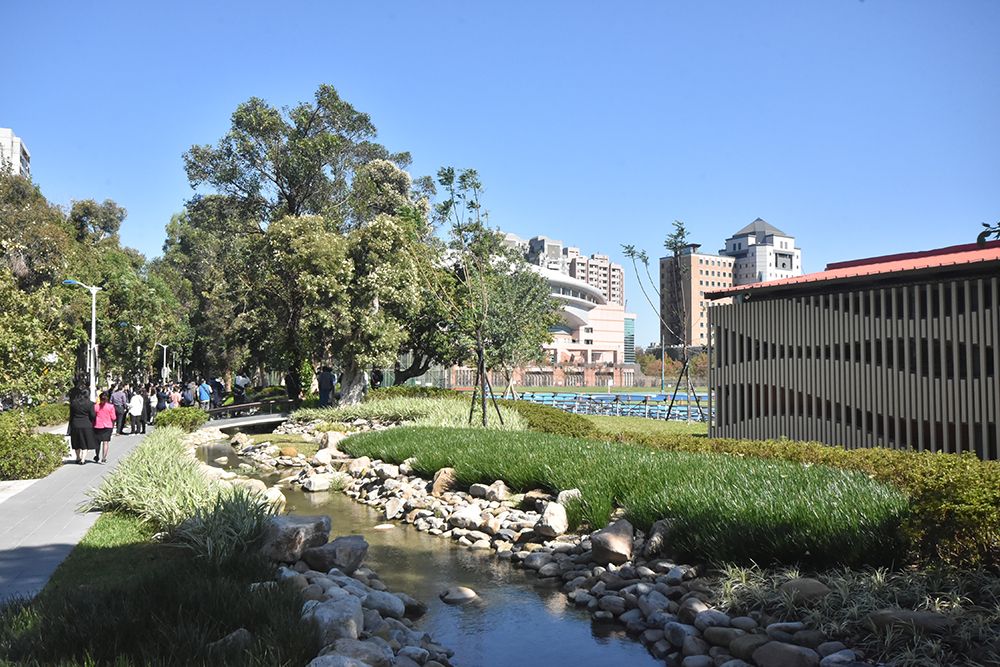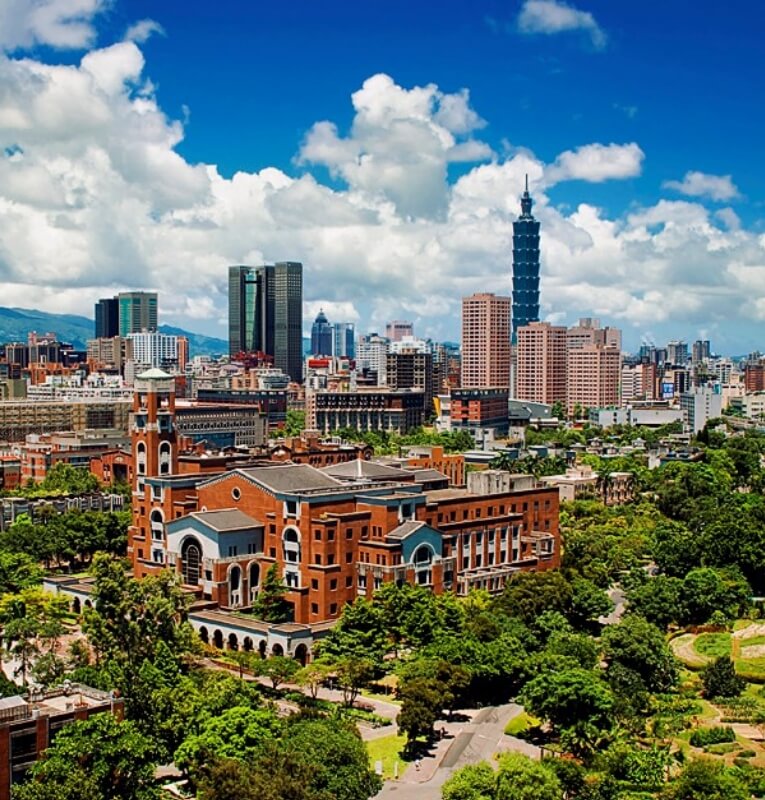
NTU and Taipei City Transform Historic Canal into Pleasant Water Landscape
Along one side of Section 3 of Xinsheng South Road was a drainage canal built during the Japanese rule. The canal was concealed in 1973 and later buried under the cement culverts beneath Xinsheng South Road. Taipei City worked with NTU to rediscover the waterway image along Xinsheng South Road Section 3. NTU pulled down part of the campus wall and offered a piece of land to restore a pleasant water landscape in an urban environment with waterway as the core image of design. Since then, people have been stopping by, taking photos, or just appreciating the view. Local animals have been spotted walking through this new space as well, such as red-bellied tree squirrels and Malayan night herons. It has become the new landmark in Gongguan area. The canal stretches from NTU’s main entrance to NTU Sports Center near Section 1, Xinhai Road. The parking space for scooters and bicycles were remodeled into pedestrian-only space in a green and sustainable way. Besides permeable pavement, lots of shrubs and ground cover plants are grown in this new space. Based on the image of an agricultural waterway, this beautiful canal can also retain floodwater. It really has reshaped the relationship between human, space, and life. The restored canal along Xinsheng South Road Section 3 connects the green belts outside and inside of the campus. The landscape is spacious and bright, and it provides a recreational area of historical and ecological significance for the public, the faculty, and students alike.
Te-Chi Reservoir Water Quality and Algae Monitoring Program
The Te-Chi Reservoir is a significant water source in the central region of Taiwan. NTU assists the Ministry of Economic Affairs in conducting water quality investigations in the reservoir's catchment area and monitoring algae in the Te-Chi Reservoir. This effort aims to understand the impact of climate change on water quality and eutrophication in the reservoir. In addition to ensuring that the reservoir's water quality meets drinking water source standards, it also contributes to informing the government's future improvement strategies for reservoir management.

(照片來源:經濟部)
Southern Sulfur Creek Watershed Water Quality Monitoring
Beitou Hot Springs is one of Taiwan's significant hot spring tourism regions, covering areas including the Southern Sulfur Creek and Huang Gang Creek watersheds. The Southern Sulfur Creek flows downstream through the Ba-xian Canal Diversion, providing irrigation water for the Guandu Plain. However, the discharge of acidic hot spring water from local industries or natural springs has led to water acidification in nearby watersheds, impacting the local ecology and the quality of irrigation water, which, in turn, affects food and water resource security for residents.
NTU's team has assisted the local community in establishing methods for assessing the impact of hot spring water discharge on the water environment's assimilative capacity (self-purification capacity). This approach aims to balance the water environment's assimilative capacity with the pollution load from acidic hot spring water, ensuring the safety of downstream water resources and the sustainability of the aquatic environment. This aligns with the concept of a healthy watershed.




